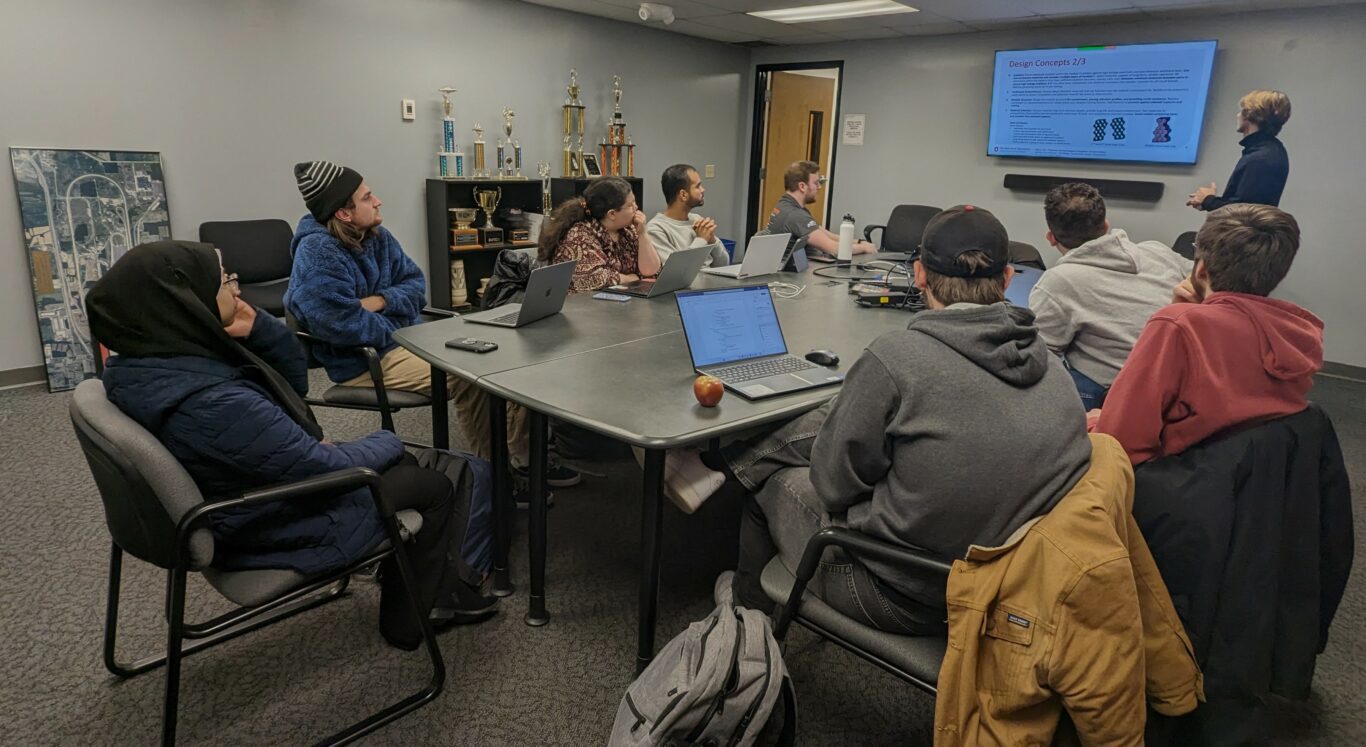By: Nurah Baseer
The Ohio State University is partnering with Columbus State Community College to compete in the newly launched three-year collegiate competition, the Battery Workforce Challenge, sponsored by the U.S. Department of Energy and Stellantis.
Here 12 North American university teams, have been selected to design, build, test and integrate an advanced EV battery into a future Stellantis vehicle. They OSU-CSCC crew recently presented its three-year project collaboration plan, which focuses on cultivating an inclusive and collaborative environment to nurture a student team specializing in automotive battery pack development. It emphasizes the harmonization and enhancement of essential skill sets among team members, enabling each individual to contribute effectively towards the collective competition objectives.

During the first semester of the BattChallenge, the team initiated a series of knowledge-sharing sessions, featuring distinguished professors and researchers specializing in various fields including vehicle electrification, lithium-ion battery technology, management and communication. In these lecture-style sessions, speakers not only share their research backgrounds but also provide valuable insights beneficial to the team’s learning journey.
To date, the team has welcomed four distinguished speakers including Hossein Darvish, a doctoral candidate at the University of Salento; Tyler Jensen, an OSU aerospace engineering student; Mark Mitchell, CSCC’s professor of Automotive Technology; and Matilde D’Arpino OSU’s assistant professor of Mechanical and Aerospace Engineering.


Darvish and Jensen covered distinct facets of lithium-ion battery technology with Darvish focusing on thermal management and Jensen battery safety. Mitchell delivered a lecture at CSCC as part of his introductory course on hybrid and electric vehicles. The most recent session featured the team’s lead faculty advisor, D’Arpino, who provided CSCC students with a tour of OSU’s vehicle electrification facilities.
Darvish emphasized the criticality of thermal management in lithium-ion battery technology, highlighting the significance of maintaining temperatures within a narrow range across a battery pack. Jensen, on the other hand, brought attention to concerns surrounding thermal runaway events within battery systems.
Mitchell’s lecture on hybrid and electric vehicles theory and operation delivered an immersive introduction to their maintenance, code clearing, and high voltage interlock looping interfacing, offering foundational insights for safe operations. Additionally, during the tour, D’Arpino highlighted critical facets of research labs dedicated to advancing lithium-ion battery technology.


CSCC’s hybrid and electric vehicle class visits and receives a trainer overview.The proactive involvement of 14 OSU and seven CSCC students in the initial knowledge-sharing sessions emphasizing battery technology insights not only illustrates their dedication to learning, but it also plays a pivotal role in enabling a robust collaboration between the two schools. This mutual exchange of knowledge boosts their collective expertise and serves as a bridge enhancing the partnership between the two institutions.
Furthermore, the team is actively developing a lineup of speakers for the first year of the BattChallenge. This dual commitment reflects the team’s comprehensive dedication to continuous learning and readiness to gather insights not only from internal sessions but also from external industry experts participating in the competition.
What’s next for the team? The universities are actively recruiting passionate students interested in participating in the Battery Workforce Challenge. Our team offers diverse positions to accommodate the various needs and interests of students.




